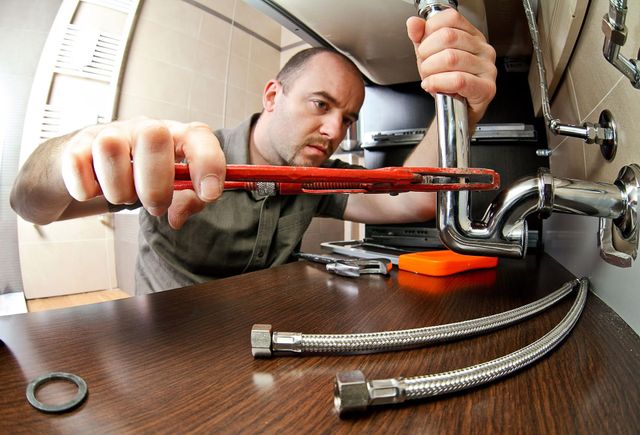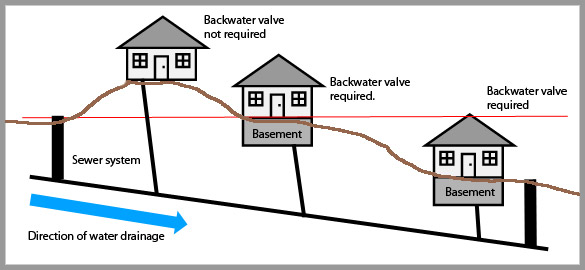Are you currently looking for info on The Inner Workings of Your Home's Plumbing?

Recognizing just how your home's pipes system functions is necessary for each house owner. From providing clean water for drinking, cooking, and bathing to safely getting rid of wastewater, a properly maintained pipes system is critical for your family members's health and wellness and convenience. In this extensive guide, we'll explore the intricate network that composes your home's pipes and offer suggestions on maintenance, upgrades, and handling usual concerns.
Intro
Your home's plumbing system is greater than just a network of pipes; it's a complex system that guarantees you have accessibility to clean water and efficient wastewater elimination. Recognizing its components and just how they collaborate can aid you stop costly repair services and guarantee every little thing runs smoothly.
Fundamental Elements of a Plumbing System
Pipelines and Tubing
At the heart of your pipes system are the pipes and tubes that carry water throughout your home. These can be constructed from various products such as copper, PVC, or PEX, each with its advantages in regards to durability and cost-effectiveness.
Components: Sinks, Toilets, Showers, etc.
Fixtures like sinks, commodes, showers, and tubs are where water is utilized in your home. Recognizing exactly how these components link to the pipes system assists in diagnosing troubles and intending upgrades.
Shutoffs and Shut-off Points
Shutoffs control the circulation of water in your plumbing system. Shut-off shutoffs are important during emergency situations or when you need to make fixings, enabling you to isolate parts of the system without disrupting water circulation to the entire home.
Water Supply System
Key Water Line
The main water line attaches your home to the community water or a personal well. It's where water enters your home and is dispersed to various fixtures.
Water Meter and Pressure Regulator
The water meter steps your water use, while a stress regulator guarantees that water streams at a secure stress throughout your home's plumbing system, avoiding damages to pipelines and components.
Cold Water vs. Hot Water Lines
Comprehending the difference in between cold water lines, which provide water directly from the major, and warm water lines, which carry heated water from the water heater, assists in repairing and preparing for upgrades.
Drainage System
Drain Pipeline and Traps
Drain pipes bring wastewater far from sinks, showers, and commodes to the sewage system or septic tank. Traps avoid drain gases from entering your home and likewise trap debris that could cause clogs.
Ventilation Pipes
Ventilation pipes allow air into the drainage system, avoiding suction that could slow down drain and trigger traps to empty. Appropriate ventilation is vital for preserving the stability of your pipes system.
Value of Appropriate Drain
Making sure proper drainage protects against back-ups and water damage. Regularly cleansing drains pipes and maintaining traps can protect against expensive fixings and expand the life of your plumbing system.
Water Heating System
Kinds Of Water Heaters
Hot water heater can be tankless or standard tank-style. Tankless heaters warm water on demand, while containers keep heated water for prompt use.
Upgrading Your Pipes System
Reasons for Updating
Updating to water-efficient fixtures or changing old pipes can boost water high quality, reduce water costs, and enhance the worth of your home.
Modern Plumbing Technologies and Their Advantages
Explore modern technologies like wise leak detectors, water-saving bathrooms, and energy-efficient water heaters that can conserve money and minimize environmental effect.
Cost Considerations and ROI
Compute the in advance prices versus long-lasting financial savings when thinking about plumbing upgrades. Lots of upgrades pay for themselves with reduced utility costs and fewer fixings.
Just How Water Heaters Connect to the Pipes System
Understanding exactly how water heaters link to both the cold water supply and warm water distribution lines aids in diagnosing problems like insufficient hot water or leakages.
Maintenance Tips for Water Heaters
On a regular basis flushing your water heater to get rid of debris, checking the temperature level settings, and evaluating for leaks can expand its life expectancy and improve power efficiency.
Typical Plumbing Problems
Leaks and Their Reasons
Leaks can happen due to maturing pipes, loose fittings, or high water stress. Addressing leaks immediately protects against water damage and mold development.
Obstructions and Blockages
Blockages in drains pipes and commodes are frequently triggered by purging non-flushable products or an accumulation of oil and hair. Using drain screens and bearing in mind what drops your drains pipes can prevent blockages.
Indications of Plumbing Issues to Expect
Low tide stress, slow drains, foul odors, or uncommonly high water expenses are indicators of possible pipes problems that should be dealt with promptly.
Plumbing Maintenance Tips
Routine Assessments and Checks
Arrange yearly plumbing assessments to capture issues early. Search for indications of leakages, corrosion, or mineral accumulation in taps and showerheads.
Do It Yourself Upkeep Tasks
Basic jobs like cleansing tap aerators, looking for bathroom leaks using dye tablet computers, or shielding revealed pipelines in cool environments can stop significant pipes problems.
When to Call an Expert Plumbing Technician
Know when a plumbing issue requires specialist expertise. Trying intricate fixings without correct understanding can cause more damage and higher repair prices.
Tips for Lowering Water Use
Easy habits like dealing with leaks without delay, taking shorter showers, and running complete tons of washing and dishes can preserve water and lower your utility costs.
Eco-Friendly Pipes Options
Think about sustainable pipes products like bamboo for flooring, which is durable and eco-friendly, or recycled glass for kitchen counters.
Emergency Preparedness
Steps to Take Throughout a Plumbing Emergency situation
Know where your shut-off valves lie and how to shut off the supply of water in case of a ruptured pipe or significant leak.
Relevance of Having Emergency Calls Useful
Keep get in touch with details for local plumbings or emergency solutions readily available for fast feedback throughout a pipes dilemma.
Ecological Influence and Preservation
Water-Saving Components and Home Appliances
Setting up low-flow taps, showerheads, and toilets can significantly reduce water usage without sacrificing performance.
DIY Emergency Fixes (When Applicable).
Temporary fixes like using duct tape to patch a leaking pipe or placing a bucket under a dripping tap can decrease damages till an expert plumbing technician shows up.
Final thought.
Comprehending the anatomy of your home's pipes system encourages you to keep it successfully, saving time and money on fixings. By adhering to normal upkeep routines and staying notified concerning modern pipes technologies, you can guarantee your plumbing system operates successfully for years to come.
HOW YOUR PLUMBING SYSTEM WORKS
Which Pipes Do What?
Blue lines = fresh water supply entering the building Red lines = hot water supply entering the building Grey lines = pipes carrying waste away from the building and venting pipes carrying gases away from the building (through the roof) YOUR MAIN PLUMBING SYSTEMS
There are two main plumbing systems that support your home s basic plumbing needs one that brings clean water into your home, and one that sends dirty water away from your home. Connected to the toilet, bath, shower, and other faucets in your home, these two systems keep your water flowing in the right directions.
ACCESSING FRESH WATER
Fresh and clean water is brought into your home through the main water supply line . Filtered through one pipe, this water is pressured to flow into the various fixtures in your home at any given time.
This water can be sourced from a well located on your property, a pond or river (mostly cottages), or, as in most cases, from the city s municipal water treatment centre. However, it is important to note that water that is untreated, such as the water siphoned from ponds or rivers, may not be safe to drink. Personal water supplies always need to be treated for hardness and contaminants before consumed.
MUNICIPAL WATER SUPPLIES
Improve taste and odour Remove sediment Eliminate hardness Reduce chlorine COLD WATER SUPPLY VS. HOT WATER SUPPLY
Cold water flows into your home or building through the service line, which then distributes hot or cold water to your fixtures. This line is most commonly run through a central column that runs floor to floor. Hot water runs in short and straight pipes as the longer the pipeline, the more heat that will be lost in the transfer. Having shorter pipes also allows residents to access hot water more quickly.
WASTE WATER SYSTEM
Your wastewater system is divided into two parts pipes that send wastewater away from your home and venting pipes that send sewer gas away from your home. Sewage water travels through pipes that flush the water and waste towards local sewers that are operated and managed by your city or town. Most sewer systems rely on gravity to move the wastewater to where it needs to go.
The further away from your toilet or sink, the larger wastewater pipes become. This allows for waste to be disposed of from various parts of your home or business at once without pipe blockages. The angle and flow of these pipes are also essential for keeping your waste pipes clear of build up.
https://harrisplumbing.ca/how-your-home-plumbing-system-works/

Do you appreciate reading about Plumbing Installation 101: All You Need to Know? Write a remark down the page. We will be glad to hear your suggestions about this blog posting. Hoping to see you back again before long. Those who enjoyed reading our blog posting kindly remember to share it. I praise you for your time. Revisit us soon.
Request Your Service